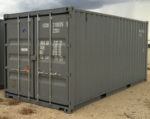
Alex Mills
By Alex Mills
Electricity generation will face revolutionary changes in 2015 and beyond as wind and natural gas will replace much of the old, traditional source: coal.
Implementation of EPA’s new air emission regulations, Mercury and Air Toxic Standards (MATS), will cause nearly 13 gigawatts (GW) of coal-fired electric generation capacity to retire in 2015, according to a study by the Energy Information Administration (EIA). The total of scheduled coal-fired generating capacity retirements is split between 10.2 GW of bituminous coal and 2.8 GW of subbituminous coal. Most of this retiring coal capacity is found in the Appalachian region: slightly more than 8 GW combined in Ohio, West Virginia, Kentucky, Virginia, and Indiana.
Nearly 16 GW of generating capacity is expected to retire in 2015, 81 percent of which is coal-fired generation.
EIA predicts that more than 20 GW of utility-scale generating capacity will be added to the power grid this year, and almost half will come from wind.
“The additions are dominated by wind (9.8 GW), natural gas (6.3 GW), and solar (2.2 GW), which combine to make up 91% of total additions,” EIA stated.
EIA explains that power ratings can be confusing but electricity units start with watts, followed by kilowatts (KW), then megawatts (MW), the gigawatts (GW), and then terawatts (TW).
A wind turbine rating of 2 MW indicates the maximum amount of power it can produce. But when the wind isn’t blowing strongly (or at all), much less power is produced. Over the course of a year, you can often assume that a wind turbine will produce only about 25 percent as much electricity as it would if the wind were blowing strong enough to match that power output. This 25 percent value is the estimate the EIA uses for land-based wind turbines.
If a 2 MW turbine were to run all year at maximum power, it would produce (2 MW x 8760 hours) 17,520 MW-hours (or 17,520,000 KW-hours). But if we assume it only produces a quarter of that, it would be 4,380,000 KW-hours. Each house uses 11,500 KW-hours, so about 380 homes could get electricity.
The addition of more natural gas, solar, and wind generating capacity follows the pattern of the past several years.
Natural gas additions are spread throughout the country, but Texas is adding more than double any other state (1.7 GW, 27 percent of total natural gas additions). There are also many additions in the Mid-Atlantic region, with more than 1.6 GW, or 26% of total natural gas additions, expected in New Jersey, Pennsylvania, Delaware, and Maryland.
Wind additions are largely found in the Plains states, with nearly 8.4 GW, or 85 percent of total wind additions, found between North Dakota and Minnesota in the north, to Texas and New Mexico in the south.
California (1.2 GW) and North Carolina (0.4 GW) combine for 73 percent of total solar additions. Both states have renewable portfolio standard (RPS) policies in place, with North Carolina’s policy including a solar-specific target. These figures do not include small-scale installations such as residential rooftop solar photovoltaic systems.
Tennessee Valley Authority’s Watts Bar 2 nuclear facility in southeastern Tennessee, with a summer nameplate capacity of 1.1 GW, is currently listed as coming online in December 2015. When it comes online, it will be the first new nuclear reactor brought online in the United States in nearly 20 years.
Alex Mills is President of the Texas Alliance of Energy Producers. The opinions expressed are solely of the author.


















Speak Your Mind